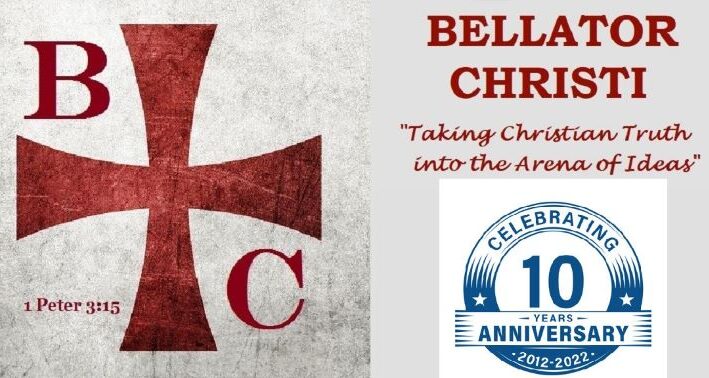By: Brian G. Chilton, PhD | December 23, 2022
During the Christmas season, many symbols and traditions come under the scrutiny of heresy hunters. One of the most prominent symbols that come under attack is the Christmas tree. Granted, it is true that trees have been used for pagan worship throughout the centuries. Early Germanic peoples used to worship the Oak of Thor. It was later cut down by Boniface. Boniface used the oak to build a chapel, which became the center of his new monastery.[1] Legend has it that an evergreen grew in the place where the oak once stood and was viewed as a symbol of God’s everlasting life and power.
While pagan religions often worshiped evergreen trees, the Judeo-Christian religion also views evergreens in a positive light. Several examples could be given of the Scripture’s discussion of the evergreen. In this article, we will look at three areas where the evergreen is symbolized in some capacity in Scripture. As such, one will find that the Christmas tree may not be as paganized as some think.
The Eternal Biblical Symbolism of the Evergreen (Hos. 14:8)
First, Scripture uses the evergreen to symbolize eternity. The evergreen is associated with eternity for good reason as it never loses its foliage, unlike deciduous trees. Rather, evergreens remain as their name implies, ever, or always, green.
In the book of Hosea, God’s eternal nature is compared with the evergreen. Hosea writes, “O Ephraim, what have I to do with idols? It is I who answer and look after you. I am like an evergreen cypress; from me comes your fruit” (Hos. 14:8, ESV). Like the cypress or pine, God never loses his nature. Likewise, he does not mix blessings with a person’s blasphemy. While numerous points could be drawn out of the passage, the evergreen holds a prestigious symbol in Hosea’s text.
The Housing Biblical Symbolism of the Evergreen (Isa. 60:13; Psa. 104:16–17)
Second, the evergreen is compared to the shelter or housing that God offers all people. Isaiah points to a day when the cedars of Lebanon and other evergreen trees would be brought to the Lord’s temple. Isaiah states, “The glory of Lebanon will come to you—its pine, elm, and cypress together—to beautify the place of my sanctuary, and I will glorify my dwelling place” (Isa. 60:13, CSB). Then, he says that the enemies of God will bow down before him, and he would make his people an “object of eternal pride” (Isa. 60:15). Notice the Lord brought these evergreens into his sanctuary to beautify and to serve as a symbol of his love.
The further watchcare of God is shown in Psalm 104. The psalmist notes that “the trees of the Lord flourish, the cedars of Lebanon that he planted. There the birds make their nests; storks make their homes in the pine trees” (Psa. 104:16–17, CSB). Even though the cedars of Lebanon were the prized possession of the people, the Lord indicates that it was he that created them and set them in place. They served as an illustration of the loving care that God provides all his people.
The Living Biblical Symbolism of the Evergreen (Hos. 14:8; Jn. 15:5)
Third, the evergreen is used to symbolize the nourishment and vitality that is found in God. Going back to Hosea, the CSB translates Hosea 14:8 as “Ephraim, why should I have anything more to do with idols? It is I who answer and watch over him. I am like a flourishing pine tree; your fruit comes from me” (Hos. 14:8, CSB). The latter portion of the verse points to the life and vitality that comes from God, as God is the source of life.
While he does not use the image of an evergreen, Jesus does further validate the image of God being the source of life and vitality. He taught, “I am the vine; you are the branches. The one who remains in me and I in him produces much fruit, because you can do nothing without me” (Jn. 15:5, CSB). Since Jesus is interconnected with the Father, then a connection with Jesus is essential for eternal life and to produce fruit.
Conclusion
The evergreen enjoys a positive outlook in the pages of Scripture. While this does not warrant whether a person should place an evergreen in their home in celebration of Christmas, it does provide a spiritual symbolism that can be enjoyed during this holiday season. Personally, I have always enjoyed putting up a Christmas tree, especially with multiple colored lights. But knowing the symbolism of the evergreen in Scripture causes me to look at our Christmas tree in a new light this season. For the Christmas tree reminds me that God, like the evergreen, is eternal, cares for his own, and is the source of life, vitality, and fruit. May you also remember the divine symbols accompanying this Christmas season as we celebrate the incarnation of Christ.
Notes
[1] Mark Galli and Ted Olsen, “Introduction,” 131 Christians Everyone Should Know (Nashville, TN: Broadman & Holman Publishers, 2000), 365.
Copyright, 2022. BellatorChristi.com.






[…] Source: The Christmas Tree and Biblical Symbolism of the Evergreen […]